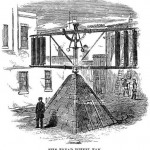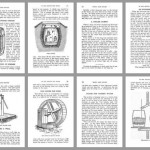“The ‘Bogdon Box Bass’ represents a reduction of technology and the simplification of needs. By demonstrating that a quality sound can be achieved by using unconventional material components at an extremely low cost, a cardboard bass guitar places the least demand on resource technology and encourages people to shift their preconceptions about the ‘typical novice instrument’.
Cardboard is not a traditional product material, however the introduction of innovative bonding, cutting and structural techniques has provided the opportunity to consider this lightweight and recyclable material in a more creative fashion. Works with or without an amplifier.”
Available as a do-it-yourself kit or fully assembled at Bogdon Music (no free plans). More information on the construction of the instrument here. Related: Shovelman & One string guitar.







